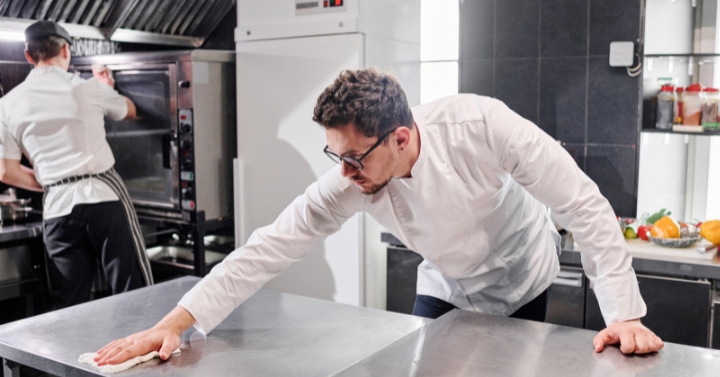From delivery services to stringent hygiene protocols to the online impact, restaurants have experienced significant changes since the pandemic wreaked havoc and upended the industry. Today’s restaurants need to be nimble as many are simultaneously managing a high volume of demanding take-out service while also offering exceptional service in clean, welcoming dining rooms to their dine-in clientele—all amid staff shortages and inflation.
“After many restaurants sadly went out of business as a result of the pandemic, those that remain viable often are required to embrace two very different business models to remain profitable,” says Laura Mahecha, Director of Professional Cleaning Products at Kline & Company. The two business models that Mahecha talks about are as follows:
- Dine-in model: It encompasses ensuring cleanliness throughout the facility and adequate staffing to deliver exceptional service to attract and retain dine-in patrons. In this regard, many establishments are incorporating digital technology for tasks such as reservations and food ordering.
- Delivery model: It consists of establishing and maintaining ghost kitchens for food preparation, with the aim of meeting the demand for delivery services through third-party providers such as GrubHub, Uber Eats, and Doordash, which charge service fees for the convenience of on-demand delivery.
The cleaning needs for both these formats can vary considerably and should be considered by professional cleaning suppliers when approaching their foodservice customers. Ghost kitchens are often heavy users of warewash chemicals and equipment focused on heavy-duty cleaning of pots, pans, and food preparation utensils, such as spatulas, knives, and large spoons. On the other hand, traditional restaurants with a focus on dine-in would need a mixture of warewash chemicals for pots, pans, and food prep utensils, as well as plates, serving platters, glassware, and utensils used in the dining rooms. Floor, surface, and hand care products would be paramount in both settings.
Kline’s upcoming report, Foodservice Cleaning Products: U.S. Market Analysis and Opportunities, will explore the evolving needs of the restaurant industry. Based on over 750 structured surveys of decision-makers in restaurants and institutional kitchens, the report will provide comprehensive sales and forecast estimates by end-use segment, product category, and supplier. To learn more about how this study can help prepare your team for success in the foodservice industry, please contact us.

